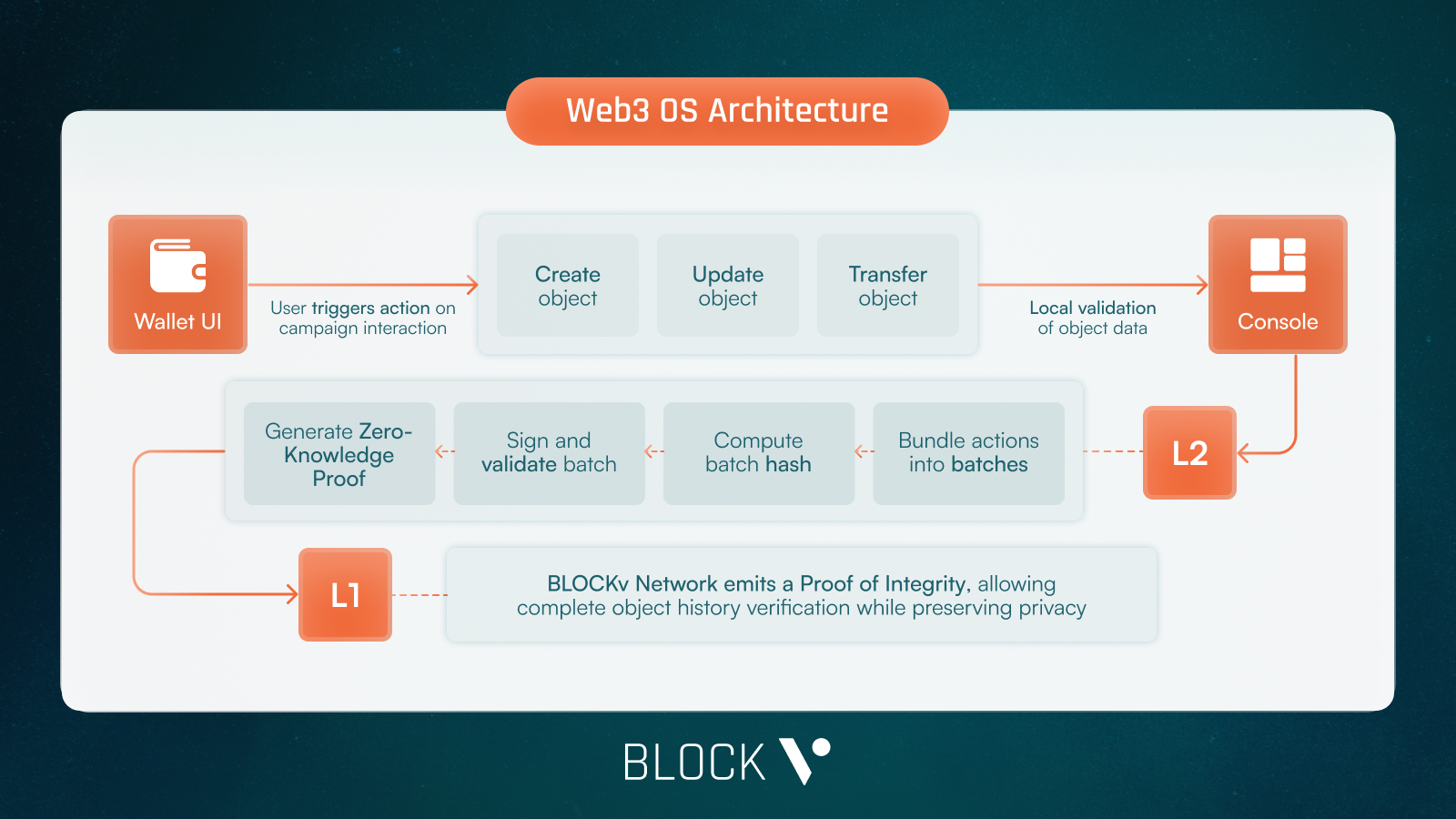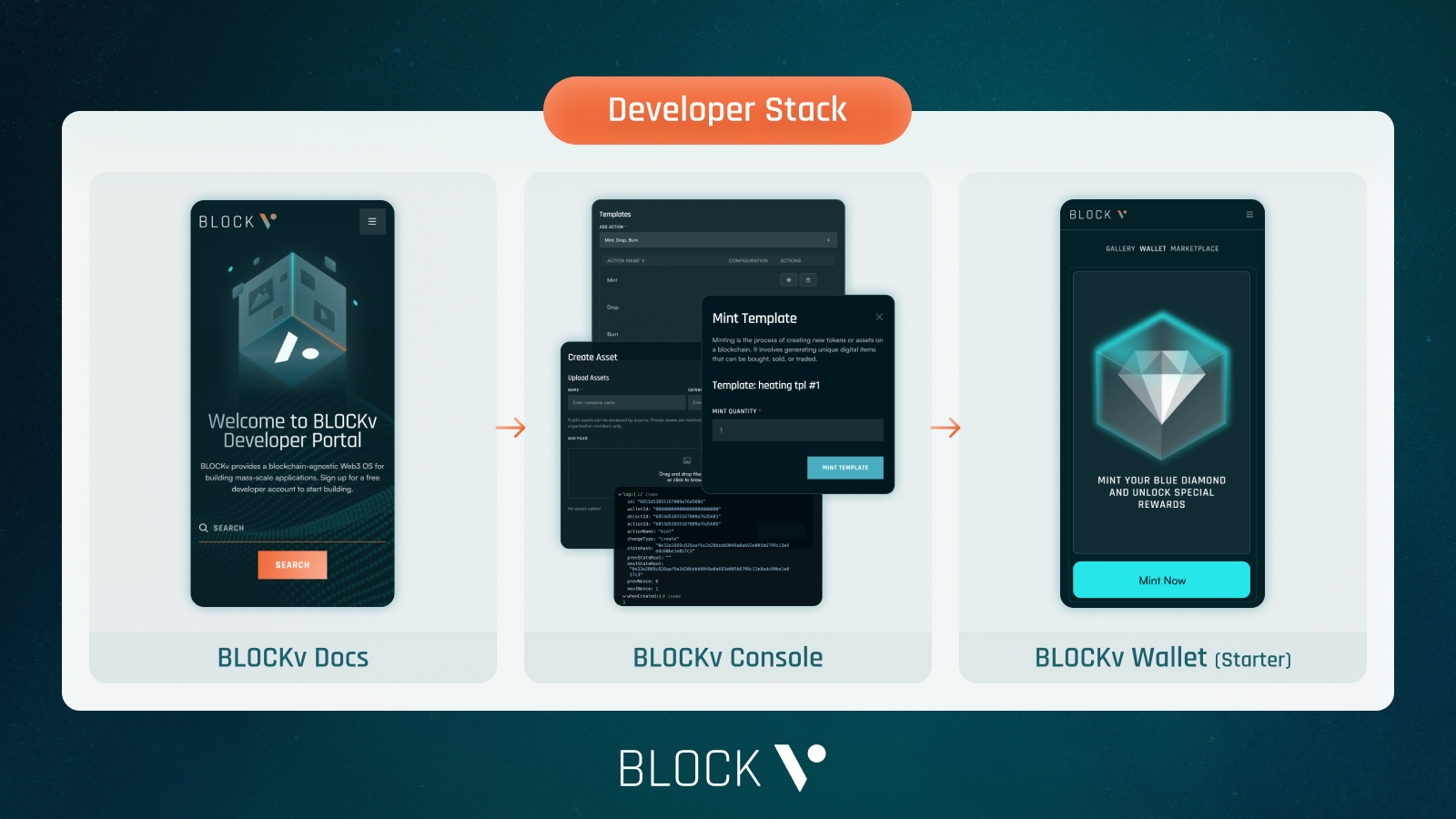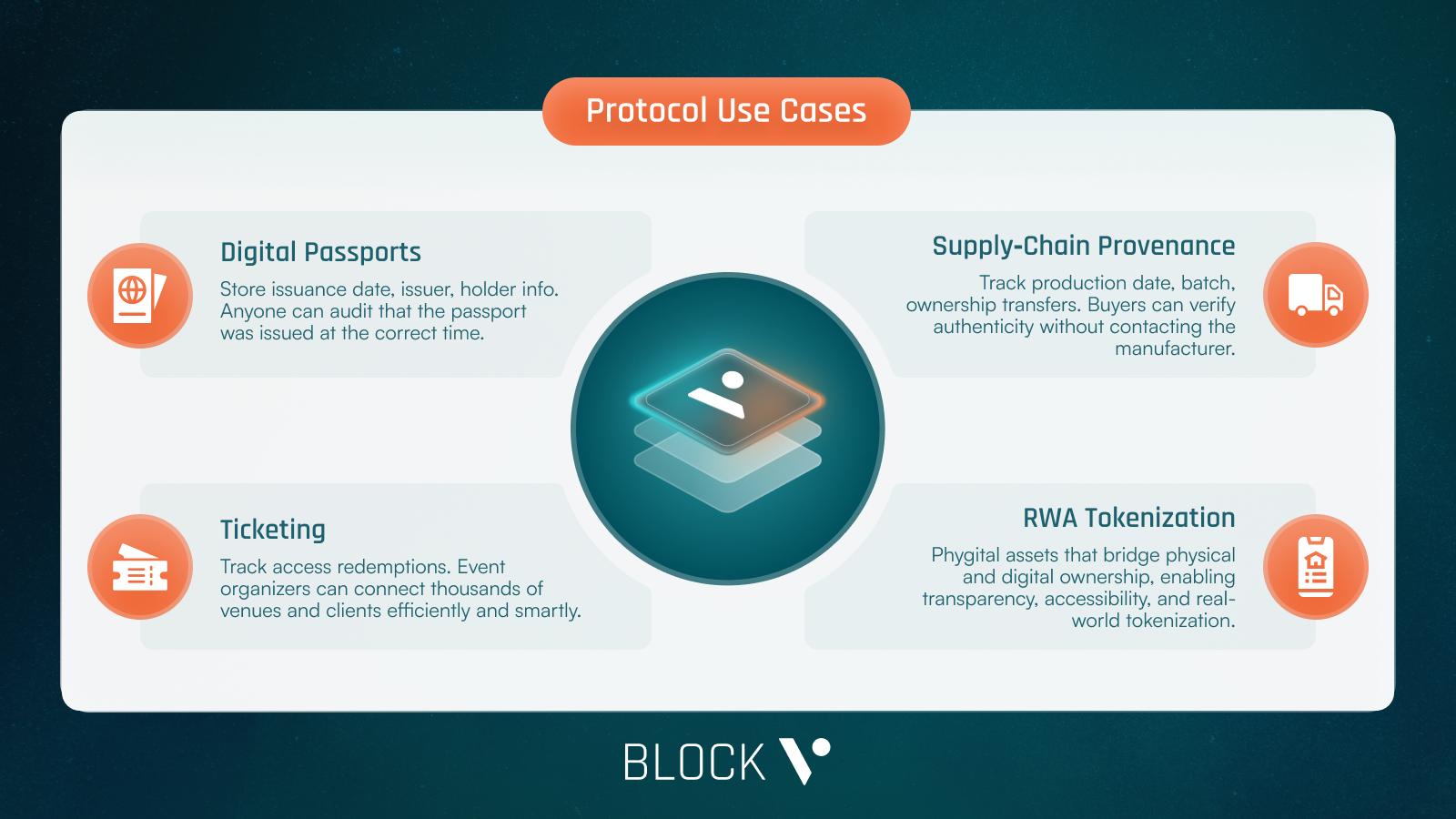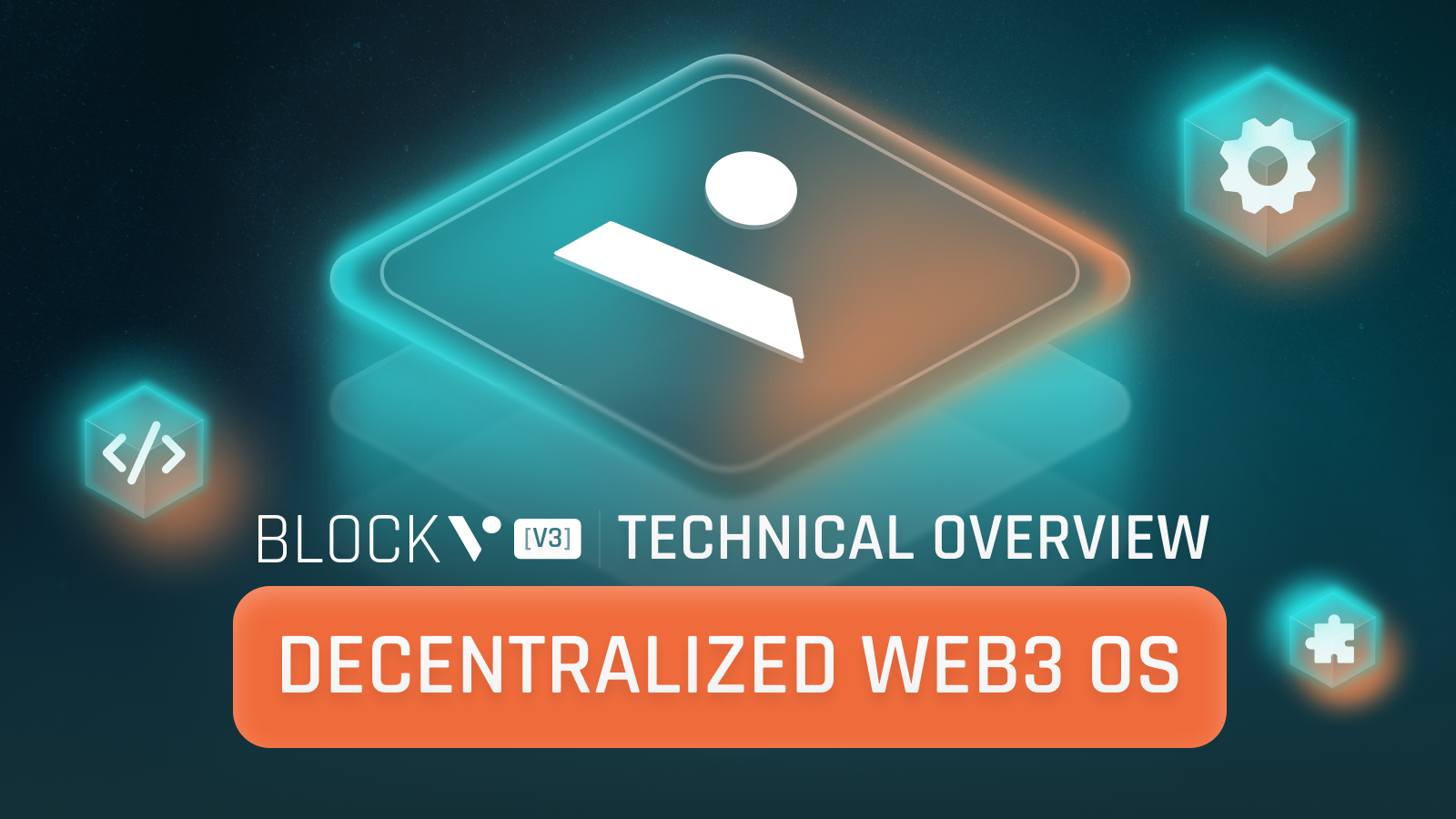Since the earliest days of the project, BLOCKv has been built on the vision of delivering a fully decentralized Web3 Operating System. A system not only capable of supporting dynamic digital objects, but also one that could scale, meet real enterprise demands, and be verifiable by anyone.
That ambition was laid out in our whitepaper long before the term "Web3" had any traction. But back then, the infrastructure simply wasn’t there. Decentralization often meant compromising on throughput or cost. And for a system like BLOCKv, built to power rich, interactive use-cases, those tradeoffs weren’t acceptable.
Instead, we focused first on performance, ease of use, and reliability. Over the years, BLOCKv became the invisible engine powering activations for major brands, delivering high-volume digital experiences without friction. We proved that Web3 infrastructure could work seamlessly at enterprise scale. But performance alone was never the final goal.
Over the past year, our focus has shifted toward completing the original vision. With BLOCKv V3, we’re introducing an architecture that maintains enterprise-level performance while making every part of the system cryptographically verifiable, without losing compliance or scalability.

Trustless By Design
In the new architecture, every action inside the network, whether it’s creating, updating, or transferring an object, goes through a cryptographic pipeline designed for both performance and proof. Each object has a public section that anyone can see, a private section that is hidden but hashed for verification, an EVM address as its owner, a unique ID, and a version number.
Whenever an action is taken, the public fields and metadata are hashed into a state hash. That hash is then linked to a running integrity hash, which chains together the entire history of that object. Even a single character altered anywhere in the chain would change every hash that follows, making tampering immediately obvious.
These actions are collected into batches. When a batch is ready, its hash is signed by validators and committed to a smart contract on the BLOCKv mainnet. This commitment acts as a permanent, tamper-evident record. Anyone can retrieve the batch from Layer 1, recompute the hash from the Layer 2 data, and confirm it matches exactly, no intermediaries needed.
Because only the batch hash is written to Layer 1, the system retains the cryptographic proof without paying the cost of storing the full data on-chain. The result is the best of both worlds: high throughput, low costs, and full cryptographic guarantees.
Zero-Knowledge Proofs keep private data private while still allowing verification, making the protocol suitable for both public and regulated environments, while staying true to Web3 principles.


Streamlined Developer Stack
One of the guiding principles behind BLOCKv V3 was to make building on the Web3 OS as straightforward as possible. Developers shouldn’t have to wrestle with a maze of tools or reinvent core infrastructure just to get a project live. The new Web3 OS is designed to give developers everything they need to build, launch, and manage tokenized experiences, without sacrificing performance, compliance, or verifiability.
At the center of the BLOCKv developer experience is what we call the BLOCKv Developer Portal. This is our umbrella term for all the resources and tools developers use to build on the Web3 OS, including clear, up-to-date documentation, real-world implementation examples, an interactive API playground for live testing, and the BLOCKv Console.
The BLOCKv Console is the hands-on control center for your projects, a fully featured interface that puts complete control over your digital objects in one place. From SmartNFTs and Templates to Actions, Faces, and custom logic, the Console gives you instant visibility and control over your assets. It’s built to handle complex object lifecycles in a way that feels intuitive.
Over the past few years, we’ve seen first-hand how quickly the developer landscape has shifted, especially with the rise of LLMs. From the start, we’ve been building BLOCKv V3 to be AI-first at its core, ensuring that the tools and workflows are ready for this new era. The related work on the BLOCKv AI Platform will make building on V3 even easier, opening the door to faster building, AI-assisted workflows, and more intuitive creation of tokenized experiences. Agents will also play a role, able to work with BLOCKv APIs during development and inside live applications, automating logic, triggering events, and orchestrating complex flows independently.
Our aim is to be among the first platforms for AI-powered Web3 building, making it easier than ever to create tokenized experiences. We have a lot more to share about what the BLOCKv AI Platform will make possible, and it’s enough to deserve its own deep dive, which we’ll be publishing in the near future.
Ever since our first release, the wallet has been the center of the BLOCKv user experience, and that continues with V3. It’s where ownership is established, campaigns begin, and interactions happen. With the new architecture, we’re introducing two distinct integration paths to match different development needs.
The fully managed variant comes baked into our new create-blockv-app starter framework. This includes a BLOCKv Wallet that will be open-source, fully customizable, and extendable with Faces for virtually any use case, from ticketing and digital product passports to loyalty programs and RWA-linked assets. It’s the fastest way to get up and running with a production-grade wallet that can be tailored to your brand and user experience.
For projects that already have their own interface or need more granular control, there’s the headless variant. This lets you integrate individual BLOCKv components, including wallet functionality, object rendering, and transaction handling, directly into your existing application. You get all the capabilities of the BLOCKv Web3 OS, but on your own terms, without adopting the full managed stack.
No matter which integration path you choose, every action flows through the same decentralized verification pipeline. When a developer creates, updates, or transfers an object via the Console or API, that action is validated locally, hashed into the object’s integrity chain, grouped into a batch, signed by validators, and committed to Layer 1.
This process, combined with Zero-Knowledge Proofs, ensures every state change is cryptographically verifiable without revealing sensitive data. Developers and third parties can independently audit object histories without having to rely on a single backend or API response.


Unlocking Powerful Use Cases
Until now, many of the most compelling ideas for verifiable digital objects ran into the same wall: you could either store everything on-chain and pay the cost in performance and fees, or you could use faster, centralized systems and accept that verification was, at best, partial.
With BLOCKv V3, that trade-off disappears. Every object in the system has a complete, verifiable history, anchored to Layer 1 and protected by Zero-Knowledge Proofs. This means any developer, brand, or protocol can prove what happened to an object, who created it, when it changed, how ownership was transferred, without exposing sensitive data or trusting an intermediary.
While the token itself, the SmartNFT, can be deployed on any chain supported by the Web3 OS, it avoids one of the biggest weaknesses in traditional systems. In the standard NFT model, the asset metadata is often just a centralized link that can be altered at any time. BLOCKv takes a different path: the state of the object is always tied back to the verifiable record maintained by the protocol, and every change is cryptographically chained. That record can’t be quietly rewritten, no matter where the token lives or how it’s bridged.
Real-World Assets (RWA) can be tokenized with full audit trails that regulators or marketplaces can verify instantly. Luxury goods can be linked to digital twins whose provenance can be confirmed by any buyer without contacting the manufacturer. Event tickets, loyalty rewards, or certification records can be issued in ways that make fraud provably impossible.
The same architecture applies to developer-driven protocols. Game assets can carry a provable history of upgrades and trades. Digital product passports can log every service or ownership change for compliance or warranty purposes. Supply chain records can be hashed and batched without slowing down throughput, then verified at any stage by any stakeholder.
These are the types of scenarios where traditional centralized APIs fall short, but where on-chain only approaches have historically been too slow, too expensive, or too complex. BLOCKv V3 bridges that gap, giving developers the speed and flexibility, with the full verifiability.
This also makes BLOCKv relevant to an entirely new segment of Web3 builders. There is a growing community of developers who treat on-chain verifiability as non-negotiable. With V3, BLOCKv becomes a viable, attractive platform for that audience, while still being able to serve traditional companies, enterprises, and agencies, who value UX, speed, and compliance.


The Path Forward
We’ve now completed the testnet phase for both the BLOCKv Data Network and the new Web3 OS. In the weeks ahead, we’ll begin releasing more technical resources, guides, and examples to help developers prepare. Shortly after, we’ll start the onboarding process for those ready to build on a verifiable protocol designed for real-world scale.
Decentralization is more important than ever, and our technical roadmap reflects that. With each release, we’ll be taking deliberate steps to reduce central points of control and strengthen the network’s trust model. That includes opening the validator layer on both L1 and L2 to external participants, evolving the staking mechanisms, introducing decentralized storage and decentralized actions, expanding deployment and bridging to additional EVM and non-EVM chains, and putting governance into the hands of the community.
It’s the return to the vision we set out in the original whitepaper, but now built on the experience of powering tens of millions of digital assets for some of the world’s biggest brands. What we’ve built is not a single product or a dashboard. It’s a protocol, one ready to support the next generation of tokenized objects, authenticated data, and interactive digital experiences.
For developers, creators, and businesses, this is a major step toward building Web3 applications with the speed of Web2 and the guarantees of on-chain verification. And for the ecosystem as a whole, it’s a path toward a decentralized, verifiable application layer bridging Web2 and Web3.





